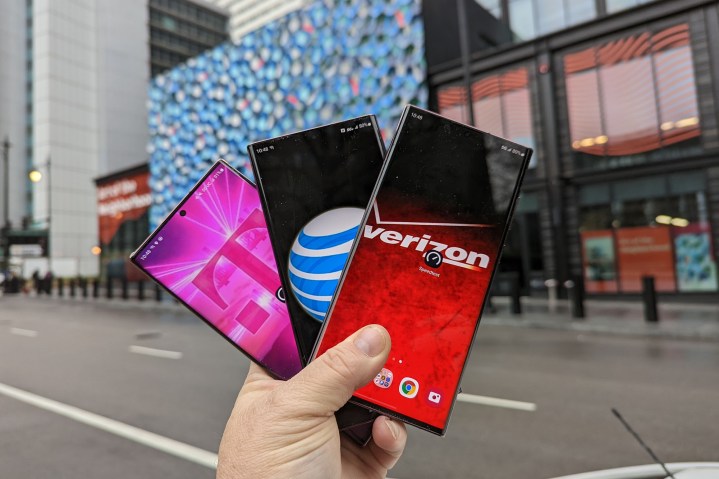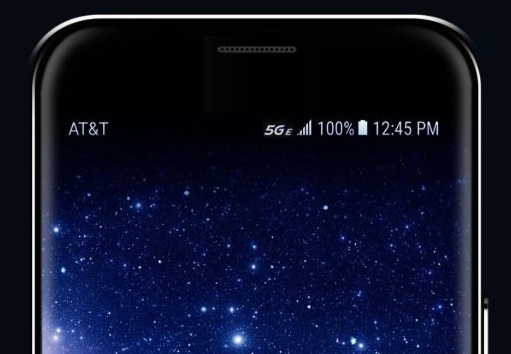In the quest to deliver true 5G technology, wireless carriers have naturally been trying every angle they can to promote their own 5G services as superior to the competition. This has resulted in a confusing assortment of letters and symbols often appearing after the letters “5G” on your smartphone to suggest that you’re getting service that is somehow better than the norm.
While this may be true in some cases, there’s at least one exception where it means the exact opposite: AT&T’s “5GE” or “5G Evolution” isn’t what you probably think it is.
When 5G isn’t actually 5G

AT&T jumped the gun on the move to 5G. To capitalize on the hype around 5G, it decided it would try and communicate to its customers that it was getting ready for the new technology — “evolving” its network into 5G, if you will.
For many carriers, the road to 5G does require some upgrades to existing 4G/LTE networks, and AT&T was no exception. However, rather than waiting until its proper 5G infrastructure was in place and ready to support its customers, the carrier decided it should label its enhanced 4G/LTE network as the “5G Evolution” network, and the “5GE” label was born.
However, no matter what your smartphone tells you, “5GE” is not 5G. The symbol that shows up in your status bar isn’t magically determined by the iOS or Android operating systems looking at the cellular network your phone is on; it’s entirely there at the whim of the carrier.
When AT&T pulled this stunt in 2019, many folks were misled into believing their 4G/LTE smartphones had suddenly gained 5G capabilities. For example, even though Apple didn’t release its first 5G device until the iPhone 12 came along in 2020, AT&T customers with an iPhone XS or iPhone XR began seeing a “5GE” icon light up on the devices when iOS 12.2 landed in early 2019. Owners of the original Samsung Galaxy S10 and Pixel 4 had similar experiences.
No 4G/LTE smartphone can gain 5G capabilities through a software update. This was deceptive marketing on AT&T’s part, plain and simple, and its rivals quickly started calling the carrier out its nonsense.
5GE wasn’t well received

Sprint filed a lawsuit against AT&T, stating that “the significance of AT&T’s deception cannot be overstated.” Among Sprint’s concerns was that AT&T’s “false advertising” would damage the reputation of real 5G by misleading consumers into believing that 5G wasn’t any faster than 4G/LTE.
“Calling its network 5GE does not make it a 5G network,” read Sprint’s complaint, and it “instead deceives customers into believing it is something that it is not.”
To make matters worse, 5GE turned out to be a bit slower than its competitors’ 4G/LTE services, which wasn’t surprising considering it’s just 4G in disguise. However, one might have expected that AT&T’s “upgraded” 4G/LTE network would actually result in some performance improvements.
An early 2019 report from Opensignal confirmed that AT&T users with “5GE-capable smartphones” did get a better experience than “users with less capable smartphones,” but it also clarifies that those “5GE-capable” devices aren’t anything special — they’re just smartphones with reasonably modern 4G/LTE capabilities.

“AT&T users with a 5GE-capable smartphone receive similar speeds to users on other carriers with the same smartphone models that AT&T calls 5GE,” the report adds.
Although Sprint and AT&T “amicably settled” their lawsuit, it’s clear that Sprint didn’t get everything it was asking for. Sprint wanted an injunction that would have barred AT&T from using the “5GE” designation or anything like it. However, a source told the Dallas Business Journal, which first reported on the settlement in 2019, that AT&T would continue to use the 5G Evolution advertising because “our customers love it.”
It wasn’t until after the National Advertising Review Board (NARB) censured AT&T in 2020 that the carrier agreed to back down, at least partially. The NARB determined that AT&T’s “claims [would] mislead reasonable consumers into believing that AT&T is offering a 5G network,” and while AT&T stated that it “respectfully disagreed with the reasoning,” it promised to comply with the NARB’s decision.
In doing so, AT&T did stop advertising “5G Evolution.” However, it never backed down from using the 5GE icon on its devices.
So, what is 5GE then?
Simply put, 5GE is nothing more than a silly name for 4G LTE Advanced service. This does include class-leading features like carrier aggregation, 4×4 MIMO, and 256 QAM. Still, none of that is any different from what Verizon, T-Mobile, and Sprint were already offering customers with a 4G/LTE symbol.
In other words, 5GE is meaningless. In fact, if you have a 5G-capable smartphone on AT&T, you can humorously confirm for yourself that it’s not truly 5G. Go into your settings and turn 5G off entirely, and there’s a chance you’ll see the “5G” or “5G+” icon replaced with “5GE.” That’s not a bug; 5G is actually off on your phone, but of course, 5GE isn’t 5G.
Sadly, there are situations where 5GE may actually be faster than true 5G service, but this has more to do with how the carriers have built out their low-band 5G networks. It’s not that 5GE is anything special; it’s simply that low-band 5G is hampered by the need to share the airwaves with 4G/LTE signals.
To roll out 5G as quickly and widely as possible, carriers turned to the low-band cellular frequencies already carrying 4G/LTE signals. This was possible thanks to a feature of 5G known as Dynamic Spectrum Sharing (DSS).
When 5G signals are running on the same frequencies as 4G/LTE signals, they have to yield to the older technology since it doesn’t know how to share. As a result, 5G can only fit into whatever spaces are left over. Since 5GE is just 4G/LTE, it gets priority over genuine 5G traffic when the network is congested. However, the same thing happens for Verizon customers whose phones say 4G/LTE.
The bottom line is that when you see “5GE” on your smartphone, you’re on a 4G/LTE network. It’s the same level of service you’d get from 4G on a Verizon or T-Mobile phone; AT&T just uses a different icon.
What about other 5G symbols?
The good news is that 5GE is the outlier when it comes to blatantly misleading 5G symbols. The other symbols you’ll see as part of the 5G icon on your phone typically mean you’re on a better version of the carrier’s network.
Verizon uses “5GUW” or “5GUWB” to identify its 5G Ultra Wideband network, depending on which device you’re using. This was initially made up exclusively of mmWave cells in a few major urban centers, but the carrier has recently expanded that to include its midrange C-band spectrum.
AT&T uses “5G+” or “5G Plus” in the same way, although its customers are much less likely to see this icon pop up. AT&T’s mmWave is confined to dense venues like stadiums and airports, while its midrange C-band rollout has been going more slowly, covering only eight cities right now. AT&T still uses “5GE” to this day, but you’ll only find it if you stray out of actual 5G coverage. Maybe AT&T should call it “5G Minus.”
Despite having the most expansive midrange 5G network, T-Mobile has chosen not to decorate its 5G icon. If you’re a T-Mobile customer, your phone will simply say “5G” whether you’re on low-band, midband, or high-band mmWave. With T-Mobile, unless you’re in a rural area, there’s a good chance you’re on the company’s midband Ultra Capacity 5G network anyway, and T-Mobile doesn’t feel the need to point this out to its customers.
While some folks may find it helpful to know when they’re using their carrier’s better 5G services, these icons are essentially marketing gimmicks that tend to divide customers into the “haves” and “have-nots.” A plain old 5G icon is boring, and even though you are using 5G, it’s low-band 5G, which means you’re not likely to get speeds that are much faster than 4G/LTE.
Either way, as long as your smartphone shows you a 5G icon without an “E” on the end, you’re getting the best available 5G service possible for your current location.



